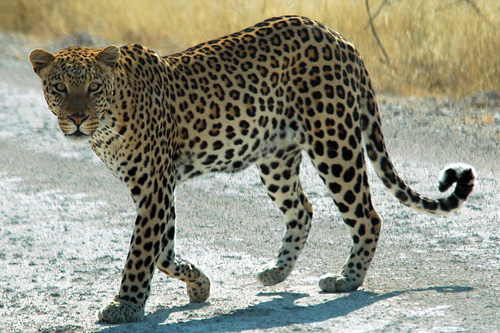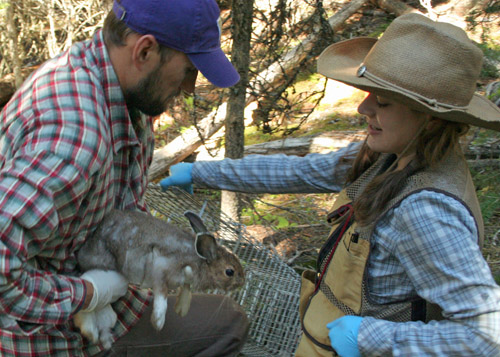The world is losing its large carnivores, their ranges are collapsing and many species are at risk of extinction.
“Promoting tolerance and coexistence with large carnivores is a crucial societal challenge that will ultimately determine the fate of Earth’s largest carnivores and all that depends upon them, including humans,” write the co-authors of a review article, in the Jan. 10 issue of Science, about the largest carnivore species on Earth.
Despite their scary reputation, carnivores deserve credit for all kinds of ecological services, among them, helping fight climate change (they eat the grazers that gobble down young trees and other vegetation that could be holding carbon), improving streams and stream banks, helping other smaller predators cope with climate change, eating diseased deer, elk and other wild animals that might otherwise contaminate livestock and, possibly, helping ranchers achieve sustainable pasture lands.

Fewer leopards in West Africa mean more olive baboons that eat forest and farm animals and crops. Image credit: Patrick Giraud (Image source: Wikipedia)
Lead author William Ripple of Oregon State University has done work in the Pacific Northwest’s Olympic National Park and in Yellowstone National Park revealing carnivores’ roles in those ecosystems. The UW’s co-author on the paper is Aaron Wirsing, an assistant professor of environmental and forest sciences, who studies how prey animals react when large predators such as wolves are present.
This paper takes a global perspective to look at the status of 31 of the largest carnivores on Earth, three-quarters of which have declining populations. These are charismatic animals like wolves, tigers, leopards and bears – but also hyenas and, interestingly, sea otters. Otters eat sea urchins that would otherwise graze on kelp. Fewer sea otters mean kelp beds are eaten down and no longer take up as much carbon dioxide.
As lions and leopards decline in West Africa, another example in the paper, olive baboons have increased eating forest animals including smaller primates and raiding livestock and crops on farms.
Here in Washington, deer populations have thrived and likely over-browsed plant communities for decades in the absence of gray wolves, Wirsing said. Eating small trees and other vegetation to the ground along streambeds means less habitat for birds, and streams are more likely to be filled with sediments from soil erosion and overheated because of lack of shade. Now with wolves back in the state, Wirsing is leading a study sponsored by the National Science Foundation to document changes to deer populations and forest landscapes.

Aaron Wirsing and graduate student Laurel Peelle tag a snowshoe hare in Loomis State Forest, Wash., as part of a study of predation on hares. Image credit: Tiffany Stoddart/U of Washington
The co-authors write that the classic conception of carnivores’ role in ecology is that they deplete resources such as fish, wildlife and domestic livestock, That is now outdated and in need of fundamental change, they write.
The 14 co-authors from the U.S., Australia, Italy and Sweden call for an international initiative to conserve large predators in coexistence with people. They suggest that such an effort be modeled on the Large Carnivore Initiative for Europe, a nonprofit scientific group affiliated with the International Union for the Conservation of Nature.
– By Sandra Hines
*Source: University of Washington
